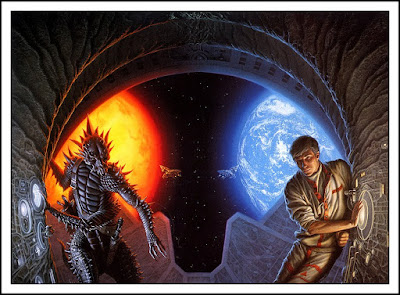Using NASA’s Hubble Space Telescope, astronomers at the University of Arizona have taken the first direct, time-resolved images of an exoplanet. Their results were published today inThe Astrophysical Journal.
The young, gaseous exoplanet known as 2M1207b, located some 160 light-years from Earth, is four times the mass of Jupiter and orbits a failed star, known to astronomers as a brown dwarf. And while our solar system is 4.5 billion years in the making, 2M1207b is a mere ten million years old. Its days are short–less than 11 hours–and its temperature is hot–a blistering 2,600 degrees Fahrenheit. Its rain showers come in the form of liquid iron and glass.
It deserves a better name than 2M1207b. May I suggest
Gehenna?
The researchers, led by UA Department of Astronomy graduate student Yifan Zhou, were able to deduce the exoplanet’s rotational period and better understand its atmospheric properties–including its patchy clouds–by taking 160 images of the target over the course of ten hours. Their work was made possible by the high resolution and high contrast imaging capabilities of Hubble’s Wide Field Camera 3.
“Understanding the exoplanet’s atmosphere was one of the key goals for us. This can help us understand how its clouds form and if they are homogenous or heterogeneous across the planet,” said Zhou.
Before now, nobody had ever used 26-year-old Hubble to create time-resolved images of an exoplanet.
Even the largest telescope on Earth could not snap a sharp photo of a planet as far away as 2M1207b, so the astronomers created an innovative, new way to map its clouds without actually seeing them in sharp relief: They measured its changing brightness over time.

Amazing, if true . Do you suppose that inhabitants of 2M1207b are observing Earth, and wondering how we live on a planet so cold?



No comments:
Post a Comment